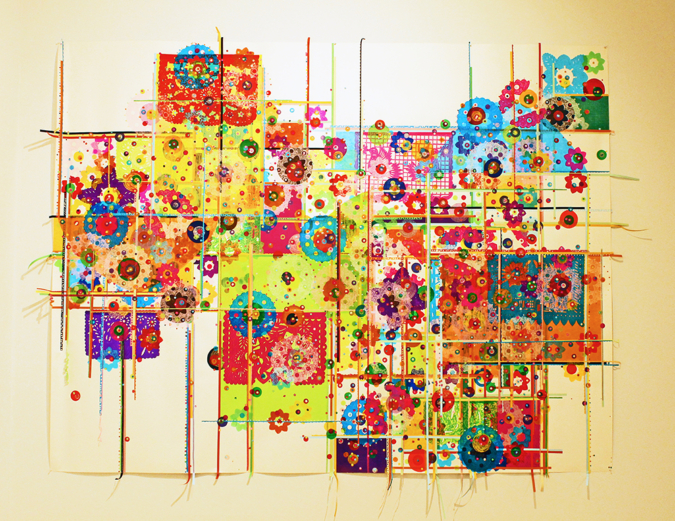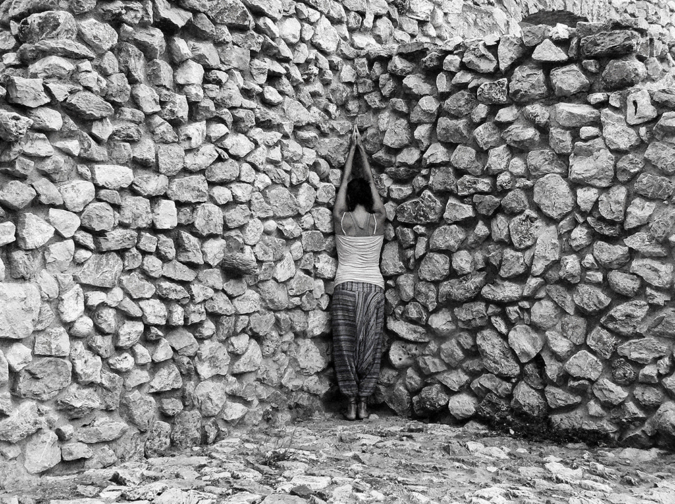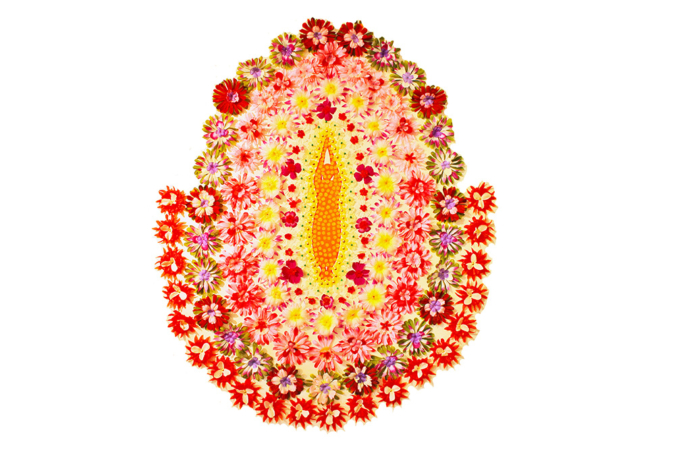Blanka Amezkua
Blanka Amezkua is Mexican born, bicultural (Mexico/US) mestiza immigrant artist, cultural promoter, educator and project initiator. Amezkua was formally trained as a painter, and her artistic practice has been greatly influenced and informed by folk art and popular culture. She initiated AAA3A (Alexander Avenue Apartment 3A) in 2016, an artist run project in her living room in South Bronx, New York. Mentions of her work can be found in the New York Times, TimeOut, Daily News, Artsy, Art21:blog, ARTnews, athinorama, Athens News, Queens Chronicle, WNYC, as well as other publications.
Blanka Amezkua studied at the Accademia di Belle Arti di Firenze, Italy and received a BA from California State University Fresno.
QUESTION:
Presently you are working on wall installations using a variety of materials, such as silk flowers, paint, pins and you are creating paper collages using tissue & quilling paper, confetti, streamers that extend onto the wall and other sheets of paper.
This work appears to be more joyful, inviting and abstract than your embroidered portraits of women which seem to be more provocative, even in your face. Earlier you made work where you install silhouettes of your body in different configurations in cities, such as Cuernavaca, Mexico. In these works you conceive of the body as a place alongside the actual places. Often artists see continuity where viewers see disjunction. Can you talk about the connections and gaps between these different groups of work.
ANSWER:
I am formally trained as a painter but for more than 15 years, my work was informed by the female imagery found in Mexican adult comic books. Throughout my practice, I transform the ways in which society and cultural histories interact. I utilize traditional and domestic techniques in my work to address social issues such as equity, race, gender and identity.
I became involved in the creation of paper collages before returning to New York. I lived in Athens, Greece for six years and I wanted to have a show upon arrival. And the thinnest lightweight material I could carry with me was paper. For those pieces I used different papers with different textures and weights that I had gathered in my travels.

My country my home, Collage using festive papers such as confetti, quilling paper, tissue paper, papel picado, 6’ x 7’ ft, 2018
I believe the connections that exist in my work have to do with the techniques I decide to use and the way I reconfigure what appears to be traditional or craft based, which result in work that owns a more contemporary sentiment. Often my traditional techniques of choice stem and/or are inspired from my upbringing in Mexico.
In my recent work, I am creating large scale collages applying festive paper used during a variety of celebrations in Mexico, such as birthday parties, Christmas, Day of the Dead, etc. In these collages, I incorporate papel picado, a Mexican folk art technique of perforating multiple tissue paper sheets at once. Papel picado is commonly displayed for both secular and religious occasions. I enjoyed working with this paper so much that I spent the summer of 2018 learning how to craft it, with chisels and hammer, directly from a papel picado master artist in Huixcolotla, Puebla, don Rene Mendoza.
Certain materials and techniques find their way into my practice, precisely because I have an affinity to them. Why and how that happens is a mystery to me. It can be the result of a variety of factors or circumstances, cultural or social, many other reasons perhaps. For example, my grandmother taught me how to embroider when I was ten years old and then I touched an embroidery needle again until I was thirty. As I work, I do investigate the history of my materials, I like to learn about them, I believe this is fundamental, and knowing how others have used the materials too. But I don’t think about the historical weight materials have necessarily, I believe I am more concerned with the infinite ways any particular material can be molded to help me materialize and idea or lead me to formulating more questions regarding a particular visual concern I might have at any given moment.
In Greece I began a series of work where I placed my body in different architectural corners and I later created silhouettes of my body taken from the posture I shaped while I remained in those corners. Using fabric and paint, I later used those forms to create different compositions on the walls in public space in different cities.
When I moved to Athens, I knew few people; the place was almost new to me. I lived there between 2010-2016, these were challenging years for the European Union, let me just say that everyone I met during the first years would ask and say “You came to live in Athens from New York City now, are you insane?!” And then, they would proceed to laugh. EVERYONE!! But I have no regrets, Greece allowed me to understand many things about the world, myself and my work. If anything, I feel grateful for everything I experienced in Greece, because it changed me. It also happens to be a gorgeous country!
Many things I did in Athens in public space would be impossible to reproduce in New York City. Just impossible! Place in fact is very specific because it provides you with a sense of belonging or not; each place is also constructed differently, with its own history and materials. Athens granted what no other city had given me, it gave me the freedom to intervene in public space in unbelievable ways. I was a foreigner, I didn’t speak the language, I was free to navigate the city because I wanted to learn about it. But I also felt it was ok to do so. The rules were different; people navigated the city with different codes and understanding. So these factors provided me with infinite new possibilities to intervene in spaces that I didn’t consider before. And for the work I conceived in Athens, place played a significant role.







